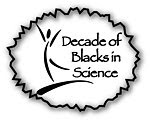The month of April celebrates National Library Week (April 13-19)! To celebrate, I will post Book reviews of Children's Science Literature.
Here are three books, each a finalist in the 2007 Animal Behavior Society Children’s Book Award for best Animal Behavior book. Octopuses
Octopuses
by Sandra Markle
Maybe it’s me, but I’m still learning so much about invertebrate sea animals. This trade book is the perfect primer for Octopus behavior for youth and adults alike. Octopuses have so many cleaver ways of escaping predators – color camouflage, can change color and pattern and texture to resemble habitat surfaces, and they can morph shape and color to resemble other sea animals. Plus the glossary section is complete and perfect. The Pictures are phenomenal!
B&N Synopsis
Octopuses are predators. They use their eight arms to catch crabs and all kinds of shellfish to eat. But octopuses are prey too. To defend themselves, they distract enemies by squirting ink into the water, and then quickly make their escape. They can change color and shape to blend into their background or resemble another less-tasty animal. Some octopuses are poisonous and warn would-be predators by sporting bright colors. These special abilities help octopuses survive and thrive in the warm coral reefs and the cold depths of the ocean. 
Where in the Wild: Camouflaged Creatures Concealed…and Revealed.
by David M. Schwartz, Yael Schy, Dwight Kuhn (Photographer)
This a great book for elementary students. The authors use poetry to cleverly describe how some animals hide in plain site. It’s amazing and so are the illustrations. It shows a picture of the camouflaged animal in its habitat. Then you open the flap it is reveals where the animal is in the shot. Great for inter-disciplinary lessons, too – Science and Language arts. Naturally Wild Musicians: The Wondrous World of Animal Song
Naturally Wild Musicians: The Wondrous World of Animal Song
by Peter Christie
This book was great! Not like most other trade books. It provides perfectly described scenarios of animal communication through songs and singing. Many different species of animals, such as birds, katydids, frogs, toads, even fish use song to communicate with each other. They sing to attract mates, defend territories, duel with rivals, and hunt prey. It is a quick read and each section can be tackled on its own for shorter bursts of reading. And the illustrations are great.
Synopsis from B&N
Well-illustrated with photographs of animals in action, this book looks at how animals use music to communicate, to proliferate and to stay alive. The text is structured like a thesis, with each section stating and then supporting a fact about animal song. There are several funny anecdotes throughout the text, but no continual narrative line for those looking for an actual story about animal song. This text would be a good reference tool for lessons about animal behavior or music in nature.
Tuesday, April 15, 2008
Recommended Children's Science Literature - Book Reviews 2
Subscribe to:
Post Comments (Atom)















No comments:
Post a Comment